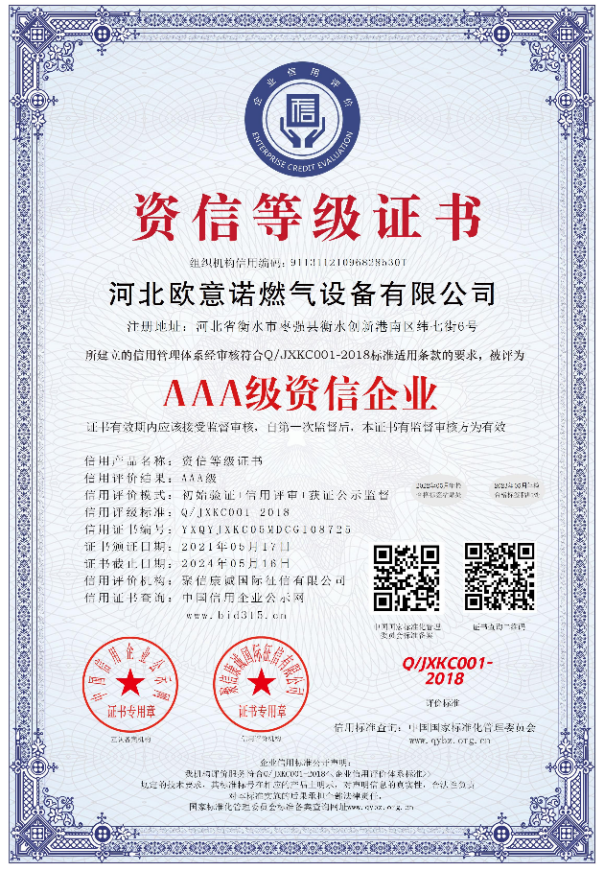
Dec . 04, 2024 16:44
Back to list
Gas Pressure Regulator Valve for Efficient Gas Control and Safety
Gas Pressure Regulator Essential Component in Gas Management Systems
A gas pressure regulator is a critical device used in various industries to control the pressure of gases, ensuring safety and efficiency in gas delivery systems. These regulators are essential for maintaining stable pressure levels across a wide range of applications, from residential heating systems to industrial manufacturing processes. Understanding the function, components, and types of gas pressure regulators can aid various sectors in improving safety and operational efficiency.
Function and Importance
The primary function of a gas pressure regulator is to reduce the high inlet pressure of gas to a lower, usable outlet pressure. This is crucial because many gas appliances, such as furnaces, stoves, and gas-powered equipment, require a specific pressure range to operate safely and effectively. If the gas pressure is too high, it can lead to equipment damage, inefficient combustion, or dangerous situations, including explosions or leaks. Conversely, if the pressure is too low, appliances may not function properly, leading to inadequate performance and potential safety hazards.
Gas pressure regulators function automatically to maintain a consistent outlet pressure, regardless of fluctuations in the inlet pressure or varying demand from gas appliances. This is accomplished through a combination of mechanical components, typically including a diaphragm, spring, and valve arrangement, allowing for precise pressure control.
Components of a Gas Pressure Regulator
Most gas pressure regulators consist of several key components
1. Inlet and Outlet Ports These are the entry and exit points for gas. The inlet port connects to the gas supply, while the outlet port connects to the gas distribution line or appliance.
.
3. Spring The spring applies a constant force against the diaphragm. Its tension determines the set pressure at which the regulator operates. Adjusting the spring tension will change the regulated outlet pressure.
صمام منظم ضغط الغاز

4. Vent Some regulators have a venting feature to release excess pressure or gas, which is crucial for safety. This allows the regulator to react to excess pressure situations without dangerous buildup.
5. Adjustable Setpoint Many modern regulators allow for adjustments to the set pressure, providing flexibility for various applications.
Types of Gas Pressure Regulators
There are several types of gas pressure regulators, each designed for specific applications
1. Single-stage Regulators These are commonly used for low-to-medium pressure applications, offering quick and direct pressure reduction. They are suitable for residential use and are often found in gas grills, water heaters, and household appliances.
2. Two-stage Regulators Designed for high-pressure systems, these regulators provide a more stable and consistent output pressure. They are essential for industrial applications where precise pressure control is required, such as in gas pipelines and large-scale gas delivery systems.
3. Digital or Smart Regulators With advancements in technology, digital regulators are becoming popular. They can monitor pressure levels in real-time and adjust automatically to maintain optimal performance. These smart regulators can also provide data analytics, helping businesses improve their gas management strategies.
Conclusion
In summary, gas pressure regulators play a vital role in the efficient and safe management of gas systems across various industries. Understanding their function, components, and types can help operators ensure that gas appliances run safely and effectively. As technology continues to advance, the evolution of gas pressure regulators will further enhance operational efficiencies, safety standards, and overall energy management, making them an indispensable part of gas supply systems. Proper selection, installation, and maintenance of these regulators are critical in safeguarding both equipment and personnel, ensuring that gas flow remains consistent and safe in all applications.
Latest news
-
Safety Valve Spring-Loaded Design Overpressure ProtectionNewsJul.25,2025
-
Precision Voltage Regulator AC5 Accuracy Grade PerformanceNewsJul.25,2025
-
Natural Gas Pressure Regulating Skid Industrial Pipeline ApplicationsNewsJul.25,2025
-
Natural Gas Filter Stainless Steel Mesh Element DesignNewsJul.25,2025
-
Gas Pressure Regulator Valve Direct-Acting Spring-Loaded DesignNewsJul.25,2025
-
Decompression Equipment Multi-Stage Heat Exchange System DesignNewsJul.25,2025

